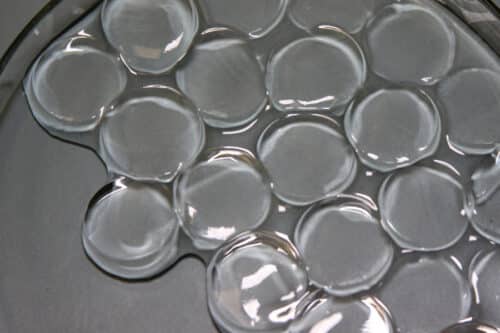MIT engineers have created a material that can absorb “record-breaking” moisture from the air even in desert-like situations where the relative humidity is 30%.

What if we can extract water from the air? It can be simple. Absorb moisture from the air and then heat and condense to get ultra-pure water. But is this that simple? Some of the literature states that scientists have experimented with mixing hydrogels with various salts to absorb water. Lithium chloride, a salt, can absorb over ten times its mass in moisture. But with lithium chloride, the moisture would only pool around the salt, with no means of retaining the absorbed water.
Engineers at MIT have developed a superabsorbent material that can soak moisture from the air even in desert-like conditions. The team infused Hydrogel, an absorbent material found in diapers, with lithium chloride to increase absorbency. The researchers found that salt infused in Hydrogel absorbed and retained an exceptional amount of moisture, even in low humidity. The researchers believe the material can absorb vapour that could then be condensed into drinking water or used for energy-efficient dehumidification in air conditioning units.
“Best of both worlds”
The researchers have made efforts to incorporate salt into Hydrogel, creating a substance capable of retaining moisture while expanding to accommodate additional water. They found that it’s the best of both worlds. Given the Hydrogel’s high water storage capacity and the salt’s ability to capture significant amounts of vapour, it is logical to seek their combination.
Time to load
The researchers discovered that previous attempts had a maximum threshold for the salt content in their hydrogels. Optimal samples contained 4 to 6 grams of salt per gram of polymer, absorbing 1.5 grams of vapour per gram of material at 30% humidity. Previous attempts soaked hydrogels in salty water for 24 to 48 hours, but the slow process resulted in minimal salt infusion. Consequently, the samples had low water vapour absorption due to low salt content. To resolve this issue, the team tested polyacrylamide hydrogel tubes by immersing sliced disks in lithium chloride solutions of varying concentrations for several days. The researchers found that with prolonged soaking, hydrogels absorbed more salt. After 30 days in a saline solution, hydrogels incorporated up to 24 grams of salt per gram of polymer, surpassing the previous record of 6 grams.
The team then tested salt-laden gels in different humidity levels and found they could absorb more moisture without leaking. At 30% humidity, the gels captured a record-breaking 1.79 grams of water per gram.






